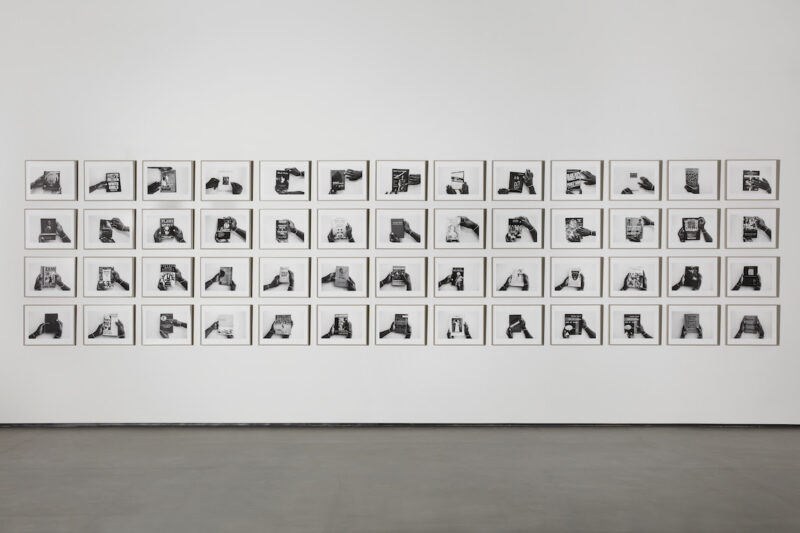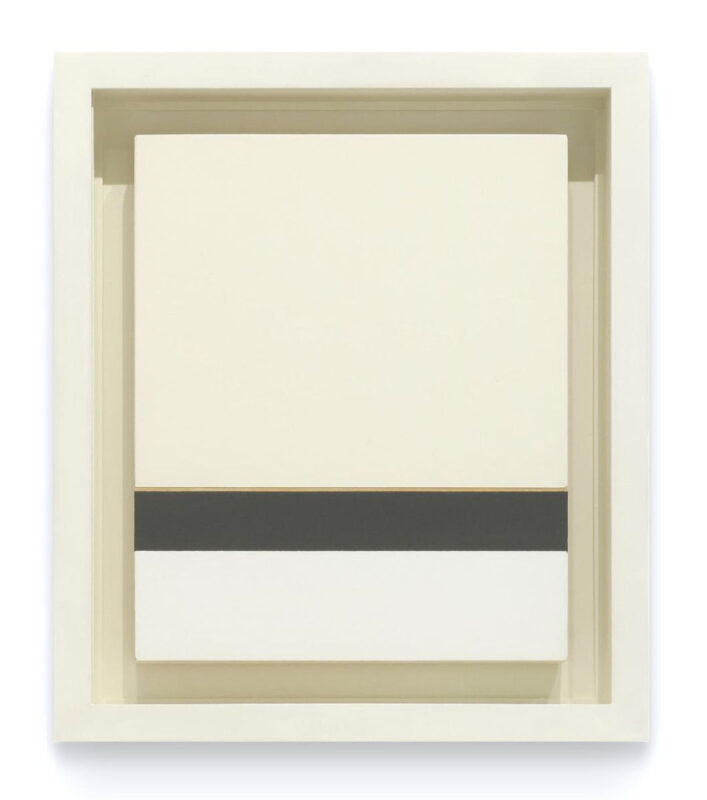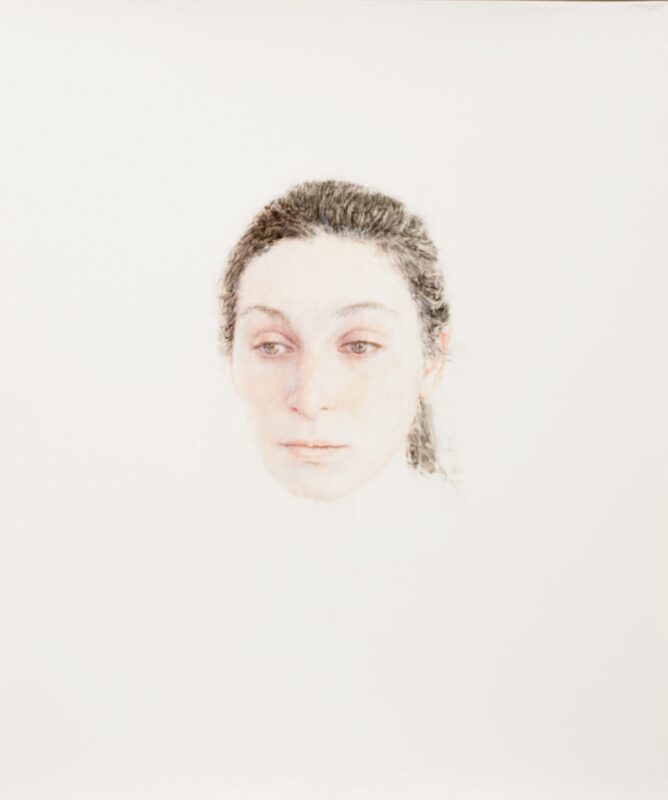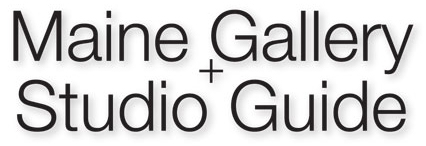
The Center for Maine Contemporary Art kicks off the summer season with the unveiling of three thought-provoking exhibitions that promise to captivate visitors this summer.
“NATURE CULT, SEEDED,” by artist Donald Moffett, marks his first exhibition in Maine. Moffett, a seasoned artist and activist, challenges conventional art forms through innovative techniques that carry both personal and political significance. This exhibition delves into the intersection of art and environmental crises, urging viewers to contemplate nature’s preservation.
“NATURE CULT, SEEDED” runs May 25 to Sept. 8 and is the latest iteration in the ongoing series but the artist’s first exhibition in Maine, where he is a seasonal resident. The exhibition is centered on the large-scale sculptural installation, “Lot 030323/24 (the golden bough),” an assemblage of dead tree limbs painted gold and bolted together to form an undead yet ethereal totem to life.
Other works in the exhibition are new wall-mounted and freestanding sculptures incorporating the form of weathered birdhouses punctured and perforated and painted in intense hues. Also included is a selection of the artist’s emblematic shaped and carved panel paintings finished in luminous epoxy resin or given a lush pelt of extruded paint, referencing various organic and bodily forms. It is a clarion call to the precariousness of our planet in crisis.
“I don’t think there are issues more important than nature and its health,” Moffett says.
This show was guest curated by Suzette McAvoy, CMCA’s former director and an independent curator, arts writer and museum consultant.
•••
“To Whom Keeps a Record” features works by 2023 Ellis-Beauregard Foundation Visual Arts Fellow Arnold J. Kemp. A generous and generative selection that provides a snapshot into an artist’s practice, this exhibition addresses persistent questions concerning artistic research and risk, ethics and politics, self and story.
The exhibition will be on view from May 25 to Sept. 8 at CMCA. An artist talk will be held from 3 to 5 p.m. July 27 with Kemp in conversation with critic and curator Bob Nickas.
One of several propositions informing this exhibition engages Kemp’s dual interest in contemporaneity and historicity; not only is his cultural practice located in the past, but it’s an ongoing construction with a capacious reach.
Born in Boston to Caribbean parents, Kemp is a multidisciplinary artist, curator, writer and educator whose work is at once poetically lyrical and culturally informed. His work, which emerges from a personal archive, serves as a reminder of today’s socio-political landscape and its reverberations in the Black psyche. Sometimes literally and sometimes figuratively, Kemp gestures through metaphors of the physical, imaginative and spiritual self. Such is the case with the photographic series Possible Bibliography, in which Kemp’s hands hold books from his private library. This work sheds light on the larger network of thought in the possible sources of Kemp’s concepts while inviting audiences to imagine what could be added to the collection.
Similarly Kemp’s newest sculptural work, “Music Brings Goodness to Us All Unless One Has Some Other Motive for Its Use,” invites the audience to interact with a selection of vinyl records from Kemp’s collection. These archival recordings from scholars, historians, theorists and political figures, such as Langston Hughes, Malcolm X, Lorraine Hansberry and Sidney Poitier, are presented alongside music from pioneering jazz artists such as Alice Coltrane, Sun Ra, Esther Philips and Ornette Coleman. This work exemplifies the multiple ways that Kemp creates entrances into ideas and information while suggesting persistence, Black interiority, Black resistance and Black imagination.
Kemp’s use of language and abstraction in the large-scale wooden sculpture “Stage” embodies the use of historical and cultural references throughout his work. Spelling out the phrase “I WOULD SURVIVE. I COULD SURVIVE. I SHOULD SURVIVE,” “Stage” is a sort of concrete poem that further investigates our relationship to self-making and personal agency.
Kemp has been concerned with artists, writers, curators and educators working in art spaces founded by and in support of other artists for almost four decades. His artistic work and writing is rooted in research and process and engages ideas about the permeability of the border between self and the materials of one’s work. His experiments in art making extend beyond the studio and formal gallery system by taking the form of talks, performances, limited-edition artist’s books, collaborations and art objects. For the artist, art production holds potential to spur new thinking about the requirements of creativity in a world where all bodies need to engage creatively every single day.
Kemp’s works have been exhibited nationally and internationally, and are in the collections of the Metropolitan Museum of Art, the Studio Museum in Harlem, the Berkeley Art Museum and Pacific Film Archive, the Portland Art Museum, the Schneider Museum of Art and others.
The exhibition was curated by Ashley Page, an interdisciplinary artist living and working in Portland. Originally from Minneapolis, Page’s studio practice, independent curatorial projects and teaching act as a vessel for dialogue, representation, intergenerational exchange and creative expression. Having obtained her BFA in sculpture and a minor in public engagement from Maine College of Art & Design, her artistic framework is a vehicle for storytelling. In 2022, she was awarded the Amelia Peabody Award for Sculpture by St. Botolph Club Foundation, and has taught workshops at Waterfall Arts, Peters Valley, the University of Maine Orono. Her curatorial and studio practice has been seen in the Portland Museum of Art, Hunterdon Art Museum, Congress Square Park, the Center for Afrofuturist Studies, The Abyssinian Meeting House and Cove Street Arts.

CMCA will also feature work by Bronlyn Jones and Robert Bauer in an exhibition that runs May 25 to Sept. 8. Including intimate works made over the past several years, the exhibition is a meditation on chance, choice and control.
Pairing sparse, geometric works with precisely rendered portraits and landscapes is perhaps, on the surface, counterintuitive but Jones and Bauer’s paintings and drawings share deep formal and conceptual connections. Powerful yet subtle movements, focused observations, and a slowing down of time come together to create an atmosphere of reverence for the subject, for the material, and the process.
The exhibition features several graphite drawings by both Jones and Bauer and this process is the root of the works on view. Jones’s attentive drawings in which she meticulously recreates the notebook pages of the likes of Ellsworth Kelly through delicate line work share a kinship with Bauer’s drawings of gardens and fields that show the history of Bauer’s decision-making through layers of softly placed and erased graphite. In fact, both Jones and Bauer use erasure as a tool to distill their works to their most potent essences, mindfully removing the extraneous and keeping only the necessary.
Jones works abstractly, using finely drawn lines and meticulously painted shapes to build her minimal compositions. Her work is beautifully simple and poetic with a limited palette of rich blacks, soft whites, silvery graphite, and the natural grain of her wood panels. Often coming in pairs or trios, Jones’s paintings and drawings open a conversation on how subtle shifts — the small tilt of a shape, an opening or closing — can completely change the mood and meaning of a work. Encased in simple frames made by Robert Bauer, Jones’s paintings and drawings featured in the exhibition invite the viewer to look slowly. There are entire worlds to glean from even the smallest of Jones’s marks.

Bauer’s careful drawings and paintings depict family, friends, and landscapes in direct and unaffected ways. Quiet and sensitively rendered, their complexity is revealed slowly: proportions are mapped out; marks are made and removed. The work is done from direct observation as well as pencil studies and photographs. In his portraits, Bauer’s subjects — almost always friends and family — rarely make eye contact allowing for a deeply intimate viewing experience: the viewer is free to observe each detail at their own pace. His landscapes are equally open, their panoramic views offering plenty to take in. Jewel-like and encased in simple frames built by Bauer, the works are near mathematical in their rendering and each piece is simultaneously intimate and vast, still and vibrant.
Touching on numerous art historical references like the delightfully dutiful grids of Agnes Martin, Lucian Freud’s honest and vivid portraits, and the scrupulous depictions of vastness by Vija Celmins, Jones and Bauer’s paintings and drawings are having a conversation about deep and sincere observation: how can we truly understand what we behold? How can we retain only the essential and what do we need to let go of to do so? In Jones’s Erasure List, a finely typed text list with graphite, the path is laid out for us: what is left out, what is unnecessary, what is resisted, what is inessential, what is rejected, what is too easily said, what is glib, what is overstated, what is edited, what is left unsaid.
Annika Earley, who curated the exhibition, is an artist and curator. She holds an MFA fro m Maine College of Art as well as an master of philosophy from College of the Atlantic. She has curated exhibitions at Able Baker Contemporary, Speedwell Contemporary and Zero Station in Portland. Originally from rural Switzerland, Earley now lives in Mid-Coast Maine.
CMCA is located at 21 Winter St., Rockland. For more information, go to cmcanow.org.
Categories: Artists Reception, exhibitions, gallery, openings, Rockland, shows
Tags:

